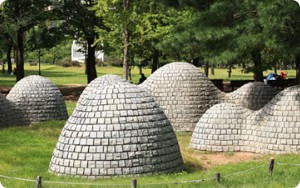History of Mongchon
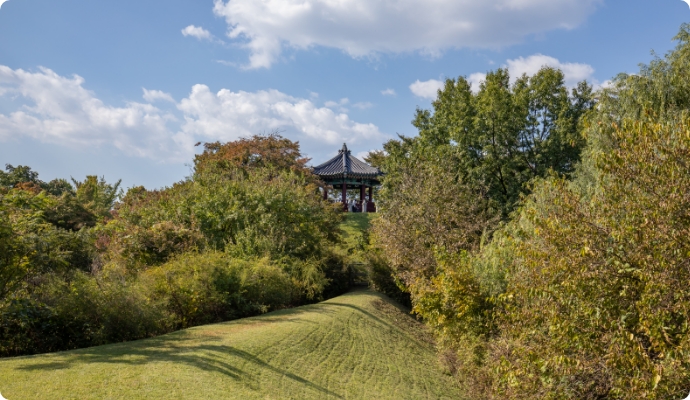
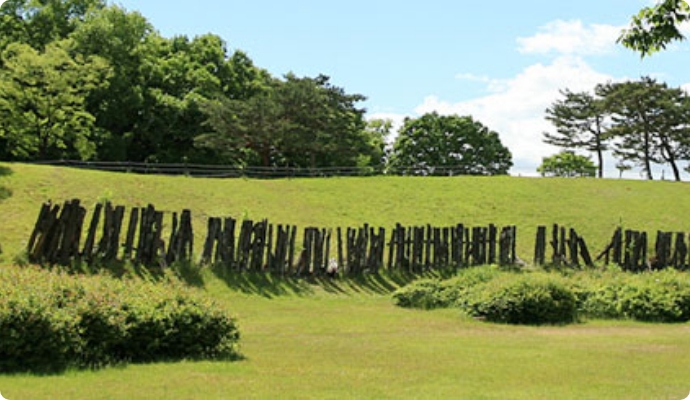
-
- Mongchon Fortress
-
The Mongchon Fortress had remained a mystery as to its meaning except the fact that it was the fortress of Hanseong Baekje Era. Entering 1980’s, since this area was confirmed as a construction site for the 1988 Seoul Olympics, it was necessary to investigate the real purpose of this fortress. To restore the fortress in the shape of a relic park and to gather the historical research materials, Seoul National University Museum conducted five rounds of excavation researches from 1983 to 1988. With all the material from the excavations, the Mongchon Fortress has been shaped into what it looks like today.
The ramparts of Mongchon Fortress were built with clay soil as it was located on a tributary of the Han River. Especially, wooden fences were constructed on the northern wall platform and a deep moat was formed around the fortress. A distinctive feature of this fortress is that it is positioned to defend against enemies coming from the northern direction.
Along with the houses, dokmudeom (coffins made with large pots), storage pits, and various relics including Baekje earthenware, weapons, fishing hooks, stone mortars etc. were excavated forming precious materials for research into the Baekje era.
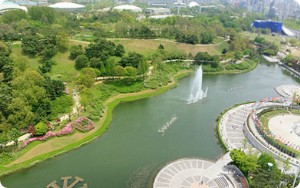
-
- Gommal Bridge
-
Originally, this bridge was called Mongchon Bridge, and Mongchon means “Ggum-maeul [Village of Dreams]” in Korean. “Gommal” is the ancient word for Ggum-maeul, and in March 1986, the Seoul City Geographical Naming Committee changed its name from Mongchon Bridge to “Gommal Bridge” to restore the purity and beauty of the Korean language.
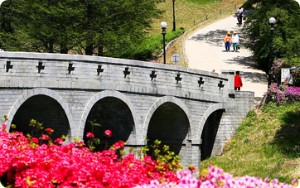
-
- The Wooden Fences of Mongchon Fortress
-
In Korea, wooden fences were used as a method of defense against the enemy from the early Iron Age to the Joseon Dynasty. The wooden fences of Mongchon Fortress are differentiated from other fences in that they were built on top of the clay walls.
According to the findings from the investigations conducted by the Seoul National University Museum between 1983~1988, the position of the wooden fences in Mongchon Fortress was confirmed.
It is thought that large wooden columns were erected with gaps of 1.8 meters in holes with depths of 30~90 centimeters and diameters of 30~40 centimeters in the base rock, and between the columns, reinforcement columns were erected. The height of the wooden fence is not known precisely, but it is estimated to have been 2m or higher. These wooden fences were restored in accordance with the estimated original position of the wooden columns that were discovered and investigated.
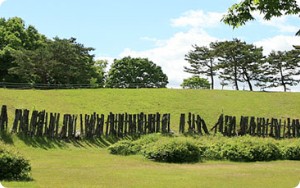
-
- Dugout Hut Site
-
After a six-stage precision excavation process, four above-ground structure sites and twelve dugout hut sites were found. These dugout hut sites are located in high areas with altitudes of 25m above sea level. They can be divided into three types depending on the level form and depth.
First is a type made by digging the hill slope into an L shape, and these are dominant in terms of numbers. The second is the dugout with the level surface in the shape of a quadrangle, and at the time this was made by digging about 1m from the ground surface.
Horse bones and iron weapons were mainly excavated from these dugout huts, so it is thought that these were used for special military purposes and not as general households. The third dugout hut was in the shape of a hexagonal structure with the entrance installed where the short sides of the hexagon meet (southeastern side).
The length of the long wall is about 6m and the short wall is about 4m. There are 10 holes for pillars on the long wall, and the diameter of each hole is about 50cm. There are 4~5 holes for pillars also on the short wall, and the standard diameter of these holes is about 20~30cm, but they tend to be larger in the corners as they have to support more weight.
There are no separate facilities within the dugout huts, but on the northeastern corner, an ondol shaped stove stands out. Of the four dugout huts exhibited here, number 1 is the second quadrangle type, but as the number 2 hut was constructed after its abandonment, many areas have withered and become bent. The number 3 & 4 huts are the typical hexagonal types, and after the abandonment of the number 3 hut, it was moved slightly to the east, and the number 4 hut was constructed.
